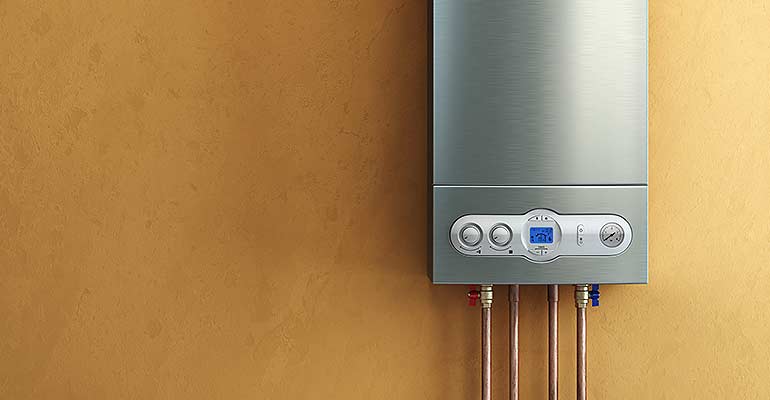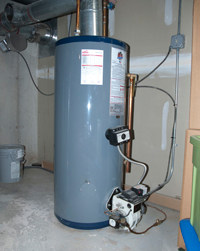Step-by-Step Steps to Maintaining Your Home's Hot Water SystemEssential Care Strategies for Your Home's Hot Water SystemBest Practices for Maintaining Your Home's Hot Water System
Step-by-Step Steps to Maintaining Your Home's Hot Water SystemEssential Care Strategies for Your Home's Hot Water SystemBest Practices for Maintaining Your Home's Hot Water System
Blog Article
We have stumbled on the article involving What Kind of Maintenance Do Water Heaters Need? below on the net and concluded it made perfect sense to talk about it with you over here.

Hot water is essential for everyday comfort, whether it's for a revitalizing shower or cleaning meals. To ensure your hot water system runs successfully and lasts much longer, routine upkeep is vital. This article provides functional ideas and insights on how to keep your home's hot water system to avoid disturbances and pricey repair services.
Introduction
Keeping your home's warm water system may appear overwhelming, however with a few simple actions, you can guarantee it operates smoothly for many years to come. This guide covers every little thing from comprehending your hot water system to do it yourself upkeep ideas and recognizing when to contact specialist aid.
Significance of Keeping Your Hot Water System
Regular maintenance not just expands the lifespan of your warm water system but likewise guarantees it runs efficiently. Ignoring upkeep can bring about reduced performance, greater energy bills, and even premature failing of the system.
Signs Your Hot Water System Requirements Upkeep
Recognizing when your warm water system requires attention can prevent significant concerns. Look out for signs such as inconsistent water temperature, unusual noises from the heating unit, or rusty water.
Understanding Your Hot Water System
Before diving into maintenance tasks, it's useful to recognize the standard parts of your warm water system. Typically, this includes the hot water heater itself, pipelines, anode poles, and temperature controls.
Month-to-month Upkeep Tasks
Normal regular monthly checks can assist capture small issues before they escalate.
Purging the Hot Water Heater
Purging your hot water heater eliminates debris build-up, improving efficiency and prolonging its life.
Monitoring and Replacing Anode Rods
Anode rods avoid corrosion inside the container. Evaluating and changing them when broken is essential.
Inspecting and Adjusting Temperature Level Setups
Changing the temperature setups makes certain ideal performance and safety.
DIY Tips for Maintenance
You can do several upkeep jobs yourself to keep your warm water system in leading condition.
Checking for Leakages
On a regular basis examine pipelines and connections for leakages, as these can cause water damage and greater expenses.
Testing Stress Alleviation Valves
Checking the pressure safety valve ensures it functions appropriately and avoids excessive pressure accumulation.
Insulating Pipelines
Protecting warm water pipelines reduces warmth loss and can conserve energy.
When to Call a Specialist
While DIY upkeep is helpful, some issues call for expert competence.
Complex Concerns Requiring Specialist Help
Instances include significant leaks, electric problems, or if your hot water heater is consistently underperforming.
Regular Professional Maintenance Conveniences
Expert upkeep can include detailed evaluations, tune-ups, and making certain compliance with security requirements.
Conclusion
Routine upkeep of your home's hot water system is vital for performance, longevity, and expense savings. By complying with these pointers and knowing when to seek specialist assistance, you can make certain a dependable supply of warm water without unanticipated disruptions.
Water Heater Maintenance Tips
Test the TPR Valve
Shut off the power and the cold-water supply valve. Place a bucket under the pipe connected to the temperature-pressure-release (TPR) valve on the top or side of the tank. (This valve opens if the tank pressure gets too high.) Lift the valve’s tab to let some water out, then let go. If water keeps flowing, drain the tank partway, unscrew the old valve with a pipe wrench, and install a new one. Check the Anode Rod
Put a hose to the tank’s drain cock and let out a few gallons of water. Now fit a 1 1/16-inch socket onto the rod’s hex head on top of the heater (or under its top plate) and unscrew the rod. If it’s less than ½ inch thick or coated with calcium, buy a new one, wrap its threads with Teflon tape, put it back in the tank, and tighten securely. Use this segmented rod if headroom above the tank is limited. Drain the Tank and Wash Out Sediment
Drain the remaining water in the tank into the bucket, then stir up the sediment on the tank’s bottom by briefly opening the cold-water supply valve. Drain and repeat until clean water comes out of the hose. Close the drain cock, refill the tank, and turn its power back on. Adjust the Temperature
Find the temperature dial on the side of the tank and unscrew its cover. Adjust the dial to 120 degrees using a flathead screwdriver. For every 10 degrees the temperature is lowered, you can expect to save up to 5 percent in energy costs. Turn the water heater off or the thermostat down to its lowest setting if you plan to be away from home for more than three days. Insulate the Pipes
Buy some self-sticking 3/8-inch-thick foam pipe insulation that matches the pipes’ diameter. Slide the foam over the hot-and cold-water pipes as far as you can reach. Insulating the cold-water pipe prevents condensation in summer. Peel the tape and squeeze the insulation closed. If the pipe is 6 inches or less from the flue, cover it with 1-inch-thick unfaced fiberglass pipe wrap. https://www.thisoldhouse.com/plumbing/21016402/how-to-maintain-a-water-heater

Do you enjoy reading up on How to Maintain Your Water Heater & Prolong its Life? Leave feedback down the page. We would be pleased to listen to your opinion about this review. We are looking forward that you come back again in the near future. Those who appreciated our blog post if you please consider to share it. I treasure your readership.
Schedule Service Now Report this page